Original text by: Marina Belova
A lot of people on the Web say that you may use plastic food bags instead of water soluble film, which is quite expensive. What's interesting is that not only my fellow compatriots write about it, but our western colleagues as well. Those who do not know how to use the water soluble film, are very welcome to read this article.
The question is quite an interesting one, especially if we look at it from the standpoint of an embroiderer who tries to save the consumables.
Therefore, I decided to test all the potential replacement materials in order to make sure that this method works.
So, I'll try to replace thin (10 microns) water soluble film with the following materials:

- Plastic food wrap (comes in rolls).
- Plastic bags used for food freezing. I want to point out that the bad I have here is quite thick.
I created a small monogram for embroidery on terry cloth. And made 3 copies of it right in the editor, without changing the parameters. This was necessary, because I wanted to see the difference between the test pieces.
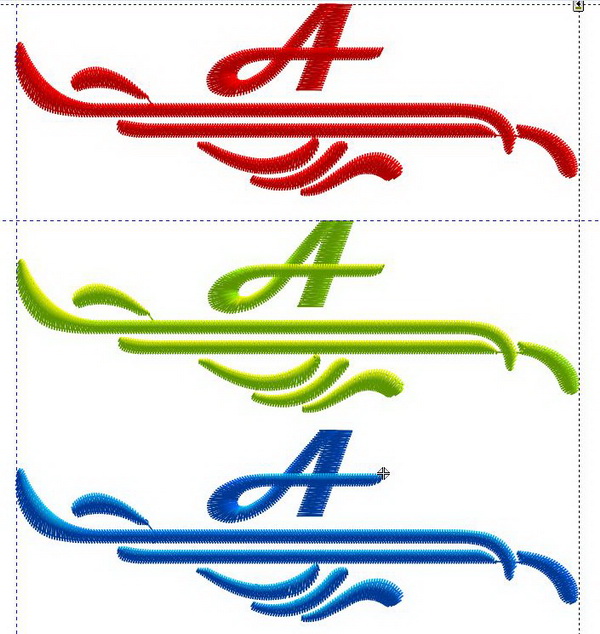
I embroidered the first monogram on the leftovers of the water soluble film:
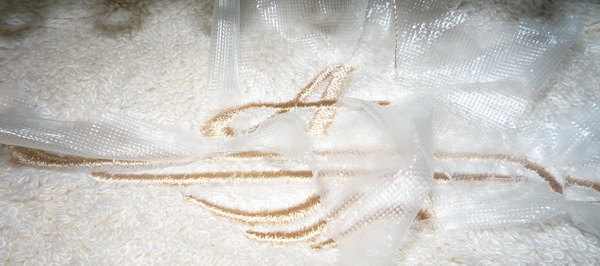
The second monogram was embroidered on a food bag:
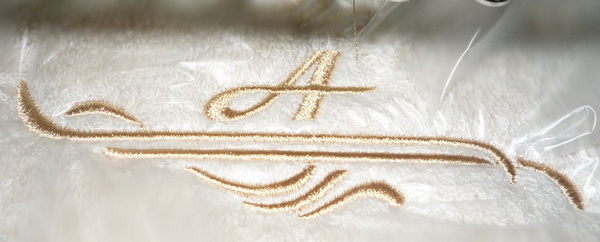
And the third one — on the food wrap:
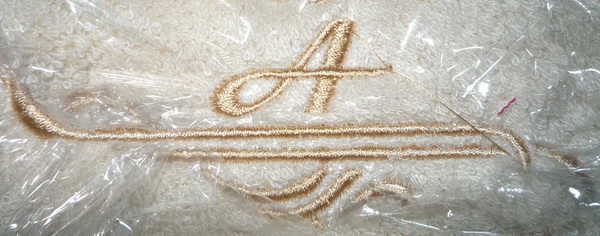
After having embroidered all 3 test pieces, I decided to embroider just one letter. I changed the design so it looked like this: first came the understitching, then the machine made a stop, and after that all the finishing stitches were embroidered.
Why would I need to do it this way? The answer is simple: so that to remove the film after having embroidered the underlay and before the finishing stitches. I've seen this several times. In my opinion, the necessity of creating the design in a highly unusual way it a great disadvantage of this method, for you have to draw the underlay by hand. But I wanted to see if there were differences between the standard way of digitizing and this one.
This time instead of water soluble film I used the food bag. I used it only to embroider the underlay:
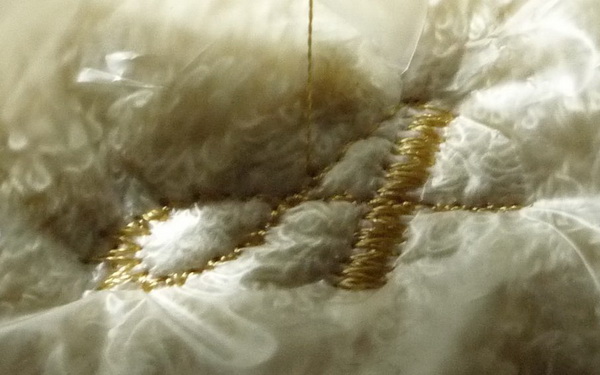
Having stopped the machine, I tore the bag off:
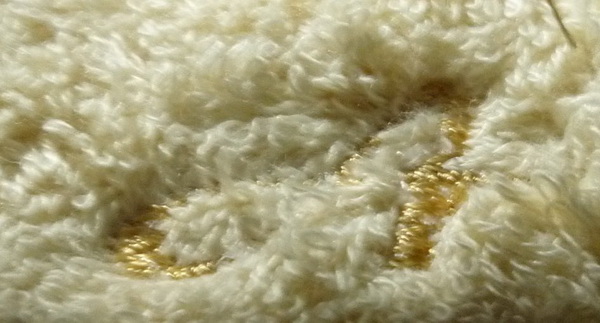
After that I embroidered all the finishing satins without any topping:
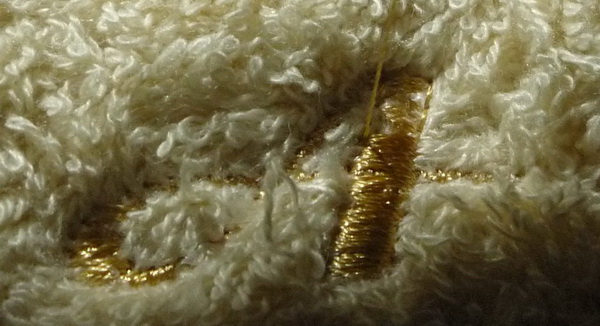
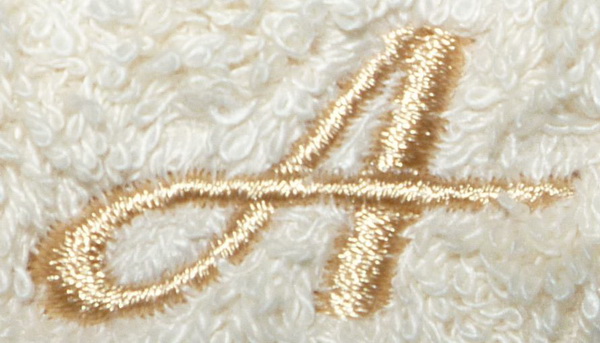
Now all three tests were completed. All that's left was taking them off the machine, and thoroughly remove the film and the bag. I haven't managed to get rid of all the leftovers:
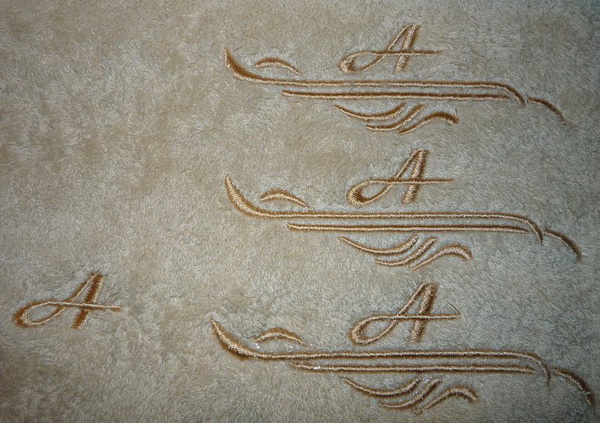
The process of removing the film or stabilizer from an item is the dullest and extremely wearisome part of the embroidery on terry cloth for me.
Especially on terry cloth, where there is always a possibility of catching the loop and pulling it out. And what's the most remarkable, it is always hard to remove all the ones that stick out, though it seems so easy. Besides, the cleaning process is rather long if you do not use some additional means, but just pluck the film from under the embroidery. Those of you who have done that, will understand.
Then I did the pressing. I decided not to take a risk of pressing the item it as it was, but used the stabilizer leftovers for protection. Just in case:

Now can you can see the results:
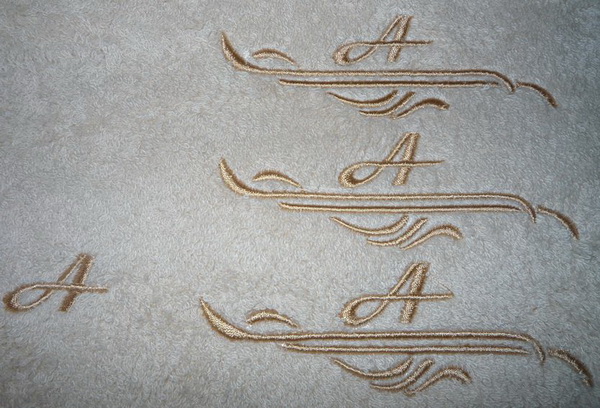
- Water soluble film (the first monogram counting from the top) is good as always. Though the film does not come off after steaming, you can remove it using the wet cloth.
- Embroidery on a food bag is just as good. And besides, all the leftover pieces disappeared after the steaming, leaving no trace.
- The embroidery on the food wrap is the worst of three — I mean the smoothness of the stitches. The leftovers did not disappear after the steaming. It seems impossible to remove them by hand, because the wrap is extremely stretchy.
Stopping the machine in the middle of the embroidery I now consider an over caution, for it only complicates both digitizing and embroidery processes.
Summary: an ordinary plastic food bag can be a perfect water soluble film replacement. At least, with terry cloth, where is works very well. I think that even washing won't change the look of the embroidery. As for embroidery on velvet, the matter is still in question.
P.S. I would not recommend using the polythene bag for complex designs with small details, for it would be hard to remove, and steaming will cause it to roll up and to create rather hard 'ribs' along the perimeter.

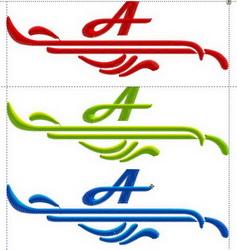

There are no reviews to display.